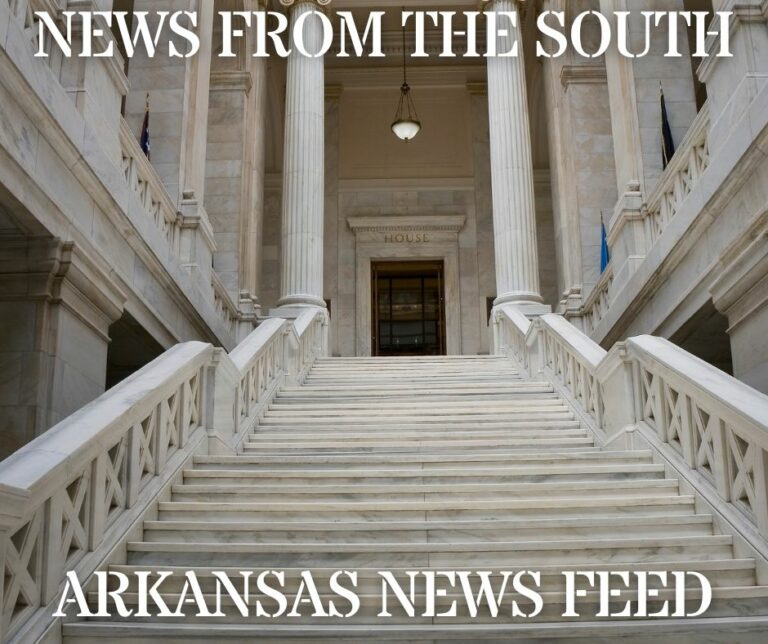News from the South - Kentucky News Feed
Report shows effects of Alzheimer’s in KY, the disease ‘you can’t see’
by Sarah Ladd, Kentucky Lantern
May 5, 2025
Before Reda Harrison was diagnosed with Alzheimer’s disease, she worked 10-hour days as a surgery coordinator in Lexington.
Always “an organized person,” Harrison “knew something was wrong” when, in 2018, she started feeling confused and lost at work.
Waking at 5 a.m. for work, the Nicholasville woman, 65, said she eventually “made an index card to tell me every step I had to take every morning: brush my teeth, floss…put your makeup on. I had to write it all out, because I would just stand in front of the mirror not knowing what to do.”
Harrison is one of the more than 80,000 Kentuckians aged 65 and older living with an Alzheimer’s diagnosis as reported in the 2025 Alzheimer’s Disease Facts and Figures Report, released by the Alzheimer’s Association last week.
Her husband, Joe, is one of the 160,000 Kentucky residents that the new report says provide unpaid care for a loved one with Alzheimer’s.
Alzheimer’s disease, which falls under the umbrella of dementia, is characterized by memory loss and is incurable, though treatments exist.
One of those treatments underwent clinical trials at the University of Kentucky, Lecanemab (brand name Leqembi). This is an antibody that targets — and in some cases, removes — amyloid plaques from the brain, and has shown some success in slowing cognitive decline. Amyloid plaques are proteins that formin the brain and are believed to be a significant driver of Alzheimer’s. Lecanemab was approved by the U.S. Food and Drug Administration in 2023.
Referring to lecanemab, Mackenzie Wallace, the director of public policy at the Alzheimer’s Association in Kentucky, told the Lantern that this “is an exciting time” for treating the disease.
In March, Senate President Robert Stivers, R-Manchester, announced Kentucky invested $300,000 into space research that will allow the Louisville nonprofit National Stem Cell Foundation to continue researching the way brain cells behave in microgravity in the hopes of finding better treatments — and cures — for Parkinson’s disease, multiple sclerosis and Alzheimer’s.
The money — which was allocated in the 2024 legislative session’s Senate Bill 1 — is a 10% match for a $3.1 million NASA grant.
Scientists hope that research can result in a cure. Meanwhile, this is “the first time in more than 20 years that we actually have a treatment now that is effective at slowing the progression of the disease, and it’s also the first treatment that actually addresses the underlying biology of the disease,” Wallace said of lecanemab.
It’s key to start Lecanemab in the early stages of the disease, making it unsurprising that Tuesday’s report showed most — 79% of Americans surveyed — want to know if they have Alzheimer’s early.
“I think Americans want to know now that it’s becoming less of a taboo or less of a stigma to talk about brain health, and Americans want to know about it, and they want to talk about it,” Wallace said.
By the numbers: what does the new report show?
Shannon White, executive director of the Alzheimer’s Association’s Greater Kentucky and Southern Indiana chapter, called the Tuesday report’s findings “profound.”
“Now more than ever, we need to work to advance disease research and treatments that can slow the current trajectory and help all Kentucky families affected by Alzheimer’s and other dementia,” White said in a statement.
The 2025 Alzheimer’s Disease Facts and Figures Report shows, among other things, a serious need for more geriatricians and more personal aides to care for the 80,500 senior Kentuckians who live with a diagnosis of Alzheimer’s.
There were 48 providers with geriatric certificates in Kentucky in 2021, according to the Facts and Figures report. It estimates Kentucky will need 393 by 2050 to care for all Kentuckians 65 and older and at least 144 geriatricians to care only for those with Alzheimer’s or dementia.
“To meet the increased need and the demand by 2050 we’re going to need a 200% increase in geriatricians,” Wallace said. “And that’s just … almost unfathomable.”
The number of diagnoses are expected to increase as the Baby Boomer generation continues to age. It’s also worth noting, Wallace said, that not everyone who has Alzheimer’s has a diagnosis.
“We know that, still, early detection and diagnosis is a challenge. Even disclosure of diagnosis is still a problem, stigma, denial, etcetera — all of those still impact or affect the ability or desire of people to be able to get a diagnosis. And so the fact that we’re already at 7.2 million people with a diagnosis (nationally) definitely makes you wonder like, wow, how much would that number increase if we kind of thought or were able to measure the people that are at risk, or that have mild cognitive impairment but have not yet been diagnosed?” Wallace said. “I think that’s pretty shocking.”
The report also showed:
There are 80,500 Kentucky residents aged 65 and older living with Alzheimer’s. 10% of adults 65 and older live with Alzheimer’s. In 2022, 1,509 Kentuckians died from Alzheimer’s. In 2024, there were 160,000 Kentucky residents serving as unpaid family caregivers. Those Kentuckians provided 307 million hours of unpaid care worth $4.9 billion.
Among other policies Wallace wants Kentucky to implement, she’d like to see an incentive program for caregivers, similar to the Credit for Caring Act that was introduced in Congress in 2024 that would give eligible caregivers a $5,000 tax credit.
“The cost of this disease is really just staggering,” Wallace said. When it comes to unpaid caregivers, she said, “these are family members, friends, neighbors, loved ones, that are trying to provide care for individuals, for their loved ones.”
If those Kentuckians who are receiving unpaid care were to have to live in nursing homes, Wallace said, “that’s at a great cost to the state” and it’s not as good for the patients.
Meanwhile, Wallace said, unpaid caregivers carry an “all consuming” responsibility.
“If caregivers are out here providing care to their loved one in the home, what does that mean for their own financial well being? Are they dipping into their own retirement funds and savings? Are they having to leave the workforce entirely to provide more care? Are they having to drop down to part time?” Wallace said. “It’s a huge economic toll on caregivers financially, and then on the other side of the coin, it’s a massive toll on our caregivers for their own well being.”
‘You can’t see Alzheimer’s.’
It took Reda Harrison two years to “wrap my arms around” her Alzheimer’s diagnosis. She credits her Christian faith with helping her learn to cope with it and, ultimately, share her story with others.
Harrison, who no longer works, attends a support group in Louisville, founded one in Lexington and volunteers with the Alzheimer’s Association.
“Everybody’s case is different. It affects you differently. For me, it was more confusion,” Harrison said. “Since I left work, what I’ve noticed is my short term memory is really bad. I can do something and, a minute later, I can’t remember if I did it or not.”
In addition to attending support groups and volunteering, Harrison fills her time with “anything I can to improve my brain.” She takes piano lessons, studies Spanish on Duolingo, a language learning app, practices yoga, quilts and does beadwork.
Her service dog, Dolly Parton — named after the musician and philanthropist because of the poodle’s “poofy hair” — helps her cope with the depression that comes with her diagnosis. Dolly Parton, the dog, can also help direct her home if she goes for a walk and gets turned around.
“She has really been a lifesaver for me,” Harrison said. “The way she helps me, mostly, is emotional. If I’m having a tough day, she just knows. She’s very comforting, because with this disease, you have a tendency to get depressed. And she helps me.”
Poodle Dolly Parton runs all Harrison’s errands with her as well and loves to be in the car.
“She’s just my companion,” Harrison said. “She keeps me independent.”
Harrison, who is taking Leqembi infusions now, isn’t sure what the future holds for her, or how her Alzheimer’s will progress.
“People decline so differently. Some of the ones that I used to have conversations with can’t even talk anymore. But for me, I really haven’t declined that much. I think it’s just my relationship with God, but I don’t know — there’s no science behind that,” she said. “I’m happy. I have learned to embrace my disease and I don’t run from it. You can’t run from it. You can’t hide from it.”
She wants more people to research Alzheimer’s and educate themselves on it, she said. She believes that’s the key to defeating societal stigma around it.
“People say, ‘Oh, you don’t look like you have Alzheimer’s. You look normal,’” Harrison said. “They don’t know what Alzheimer is. You can’t see Alzheimer’s until you’re far into it.”
Since her diagnosis, she’s lost friends who just felt too uncomfortable with the disease to be around her, she said, saying it felt like “leprosy in the Bible times.” That hurts, and she wants to change negative perceptions of the disease.
“I am still Reda. I am the same person I’ve always been. I’m probably a nicer person now, more caring,” she said. “We still want to be treated for who we are.”
GET THE MORNING HEADLINES.
Kentucky Lantern is part of States Newsroom, a nonprofit news network supported by grants and a coalition of donors as a 501c(3) public charity. Kentucky Lantern maintains editorial independence. Contact Editor Jamie Lucke for questions: info@kentuckylantern.com.
The post Report shows effects of Alzheimer’s in KY, the disease ‘you can’t see’ appeared first on kentuckylantern.com
Note: The following A.I. based commentary is not part of the original article, reproduced above, but is offered in the hopes that it will promote greater media literacy and critical thinking, by making any potential bias more visible to the reader –Staff Editor.
Political Bias Rating: Centrist
The article presents a neutral and factual account of Reda Harrison’s personal experience with Alzheimer’s disease, highlighting her struggles, treatment options, and advocacy efforts. It also discusses the broader implications of Alzheimer’s care in Kentucky. The reporting is focused on the human impact of the disease and the need for better care and support, without promoting any ideological stance. While it does mention the state’s investment in research and calls for more support for caregivers, it refrains from showing a clear political bias, maintaining an informative and empathetic tone throughout the piece.
News from the South - Kentucky News Feed
Budget Committee will vote to change industrial bond program
SUMMARY: On August 19th, the Budget, Finance, and Economic Development Committee will vote on changes to Lexington’s Industrial Revenue Bond (IRB) program. Proposed amendments include setting affordable housing requirements for projects with housing under Leaseback IRBs: 15-year terms require affordability for households at or below 80% of Area Median Income (AMI), and 10-year terms for those earning 80.1%-100% AMI. Additionally, the IRB program’s geographic scope will expand to support projects across the entire Urban Service Area, beyond the current limited zone. IRBs provide loans for developments that promote economic growth and job creation in Lexington.
The post Budget Committee will vote to change industrial bond program appeared first on lexingtonky.news
News from the South - Kentucky News Feed
WLKY interview on bullying prevention
SUMMARY: Carolyn Towns, a bullying prevention advocate and two-time author, shares her journey inspired by personal experiences of being bullied and her son’s bullying. Her children’s book, “Tiny But Mighty,” promotes using thinking skills over physical responses, while “Are You Raising a Bully?” guides parents, educators, and policymakers on preventing bullying and supporting both targets and bullies. Carolyn emphasizes early intervention, encouraging children to speak up as “Communication Commanders.” She advocates for federal laws mandating effective school bullying programs. Additionally, she developed the Bullying Buddy app, which alerts parents in real-time about bullying incidents. Carolyn conducts nationwide workshops empowering children to use their voices.
WLKY interview on bullying prevention
Subscribe to WLKY on YouTube now for more: http://bit.ly/1e5KyMO
Get more Louisville news: http://www.wlky.com
Like us: http://www.facebook.com/wlkynews
Follow us: http://twitter.com/WLKY
Instagram: https://www.instagram.com/wlky/
News from the South - Kentucky News Feed
AmeriCorps is under siege. What happens in the communities it serves?
by Ashley Murray, Kentucky Lantern
August 17, 2025
SILVER SPRING, Md. — Daniel Zare worked one-on-one as an AmeriCorps member with students going through rough times in school, lightening teachers’ workload in the classroom.
At AmeriCorps Project CHANGE, based in Silver Spring’s Sligo Middle School, Zare was one of several in his group who tracked adolescents’ emotional and social wellbeing over months using a system dubbed “My Score.” They then helped support the kids who were struggling the most.
In April, though, the program screeched to a halt. That’s when the Trump administration abruptly canceled nearly $400 million in active AmeriCorps grants across the United States that fund volunteers who embed in communities, in exchange for a small stipend and education award.
“All the work that we had culminating toward the end of the year, the relationships that we built with teachers and students and officials, it just completely went kaput because we were told we weren’t allowed to go to work at all,” Zare, 27, told States Newsroom.
Like so many longstanding federal programs and institutions severely reduced or dismantled as part of President Donald Trump and billionaire Elon Musk’s Department of Government Efficiency project, AmeriCorps — and its nonprofit partners — are now assessing the damage and seeking a way forward.
AmeriCorps programs that survived last spring’s DOGE cuts are slowly beginning a new year of service amid major uncertainty over whether they will be able to continue their work in classrooms, food banks, senior centers and other community hubs.
Winners and losers among states
AmeriCorps, a federal agency signed into law in 1993 by former President Bill Clinton, places roughly 200,000 members across the United States at 35,000 service locations, according to current agency data.
Members serve in schools, local governments and with a wide range of nonprofits that focus on health, disaster relief, environmental stewardship, workforce development and veterans.
The staffers, who pledge to “get things done for America,” are paid a modest living allowance that hovers around the poverty line. Some, but not all, can get health insurance while in the program.
Members who complete their service term, which usually lasts from 10 to 12 months, receive an education award that can be used to pursue a degree, earn a trade certificate or pay student loans.
AmeriCorps federal dollars reach programs via a couple routes. In many cases, grants flow from AmeriCorps to governor-led state and territorial commissions that divvy them up according to local priorities. In other cases, federal dollars flow straight to a program via a competitive grant process.
Kaira Esgate, CEO of America’s Service Commissions, said when the Trump administration ordered the cuts in April, some states lost large portions of their AmeriCorps portfolio, while other states fared better.
“There were no real clear trend lines around what or who got terminated and why,” said Esgate, whose member organization represents all 49 state commissions (South Dakota doesn’t have one) and the commissions for the District of Columbia, Guam and Puerto Rico.
Abby Andre, executive director of The Impact Project, a new nonprofit tracking government cuts, has been collecting data and plotting on an interactive map where AmeriCorps programs have been canceled. Andre, a former Department of Justice litigator, has also worked with her team to build other maps showing where federal workforce cuts have been felt across the country.
“AmeriCorps is a really great example of the federal dollars being kind of invisible in communities. Communities often don’t know that a local food bank or a senior center are supported by AmeriCorps volunteers and AmeriCorps money,” said Andre, who taught administrative law at the Vermont Law School after working under President Barack Obama and in Trump’s first administration.
Andre said communities with a lack of social services, including in rural areas, will likely feel the biggest losses without an AmeriCorps presence because the agency “facilitates pennies-on-the-dollar type services through volunteer work.”
“It’s not as though if these community services folded, those communities would have the money to fund equal or better services through the private market,” she said.
Losing trust
The Maryland Governor’s Office on Service and Volunteerism gave the green light to Project CHANGE to keep its program, which serves Montgomery County in suburban Washington, D.C., running through the upcoming school year.
Paul Costello, director of Project CHANGE, is now scrambling to launch a new AmeriCorps cohort after receiving the news on July 22 that the initiative had been funded. He estimates members won’t be able to begin until almost a month into the school year.
Paul Costello, director of Project CHANGE at Sligo Middle School in Silver Spring, Maryland, reads student self-assessments of their confidence levels, hopefulness and excitement for learning. Costello’s program places AmeriCorps members in classrooms to help students with emotional and social challenges. (Photo by Ashley Murray/States Newsroom)
“Sadly, AmeriCorps, as a brand name, is badly damaged, I think. I mean, I’ve got a meeting on Wednesday with a major partner who told us two weeks ago ‘We thought you were dead,’” Costello told States Newsroom in an Aug. 11 interview.
Costello’s program not only places service members in Montgomery County Public Schools, where Zare served, but also with partners including Community Bridges, Montgomery Housing Partnership and Family Learning Solutions.
The nonprofits respectively focus on helping adolescent girls from diverse backgrounds, children whose families live in community-developed affordable housing units and teens eyeing college and career paths.
The county’s school system is the largest in the state and serves a highly diverse population. About 44% of the system’s 160,000 students qualify for free and reduced meals, and close to 20% are learning English while continuing to speak another language at home.
Costello’s 18 cohort members embedded in those schools and nonprofits this past academic year were suddenly yanked in April when the government cut his grant. The partners, which had planned and budgeted to have the members through June, were thrown into “total chaos,” Costello said.
“So some of them are so desperate, they rely on their members. They had to dig into their pockets to keep them on as staff. And then we go back to them this year and say, ‘You want members this year?’ AmeriCorps has made no attempt to make them whole. So they’ve been screwed,” Costello said.
AmeriCorps did not respond to States Newsroom’s questions about nonprofits losing money.
Legal action
The federal courts granted some relief to members and organizations who abruptly lost living allowances and contractually obligated funding.
A Maryland federal district judge ordered in June that funding and positions be restored in 24 Democratic-led states and the District of Columbia that sued the agency.
Another district judge in the state also handed a win to more than a dozen nonprofits from across the country that sued to recover funding they were owed.
But for many it was too late, and AmeriCorps’ future still feels shaky.
After suddenly losing his living allowance in April, Zare had to leave Silver Spring.
“I was renting a room off of Georgia (Avenue), and I was not able to pay rent there anymore, so I actually moved back to my mom’s in Germantown for the time being,” he told States Newsroom in August, referring to another Maryland suburb.
Hillary Kane, director of the Philadelphia Higher Education Network for Neighborhood Development, said by the time the court orders were issued, many of her AmeriCorps members had already found other positions and she had completely let go of one of her full-time staffers.
While the court injunctions were “welcome news,” reinstating the programs remained “questionable,” Kane wrote in a July 21 update for Nonprofit Quarterly.
Kane’s organization is a member of the National College Attainment Network, a Washington, D.C.-based nonprofit that was among the successful plaintiffs.
Other organizations that joined the lawsuit are based in California, Iowa, Maine, Maryland, Minnesota, New Jersey, New York, North Carolina, Pennsylvania, South Dakota and Virginia.
The Democratic-led states that won reinstatement for AmeriCorps members include Arizona, California, Colorado, Connecticut, Delaware, Hawaii, Illinois, Kentucky, Maine, Massachusetts, Michigan, Minnesota, Nevada, New Jersey, New Mexico, New York, North Carolina, Oregon, Pennsylvania, Rhode Island, Vermont, Washington, and Wisconsin.
Going forward?
Kane got news on July 10 that PennSERVE, Pennsylvania’s state service commission, reinstated funding for her AmeriCorps program that places members in four West Philadelphia high schools to mentor students on their post-graduation plans.
The late notice meant Kane could only begin recruiting new members in mid-July.
“And so our start date has to be a bit fluid,” Kane told States Newsroom during a July 22 interview. “We have to essentially recruit people into this one-year cohort position, and say, ‘We’re hoping to start September 2, but we’re not 100% sure. Can you kind of just roll with it?’ It’s an awkward position to have to be in.”
The AmeriCorps pledge hangs at Project CHANGE at Sligo Middle School in Silver Spring, Maryland, on Monday, Aug. 11, 2025. (Photo by Ashley Murray/States Newsroom)
Other AmeriCorps programs have not fared so well, as the Trump administration’s Office of Management and Budget continues to withhold funds that were appropriated by Congress for the ongoing fiscal year.
Trump signed legislation in March that extended the $1.26 billion for AmeriCorps for the full 2025 fiscal year, which ends on Sept. 30.
Kane said the most “insidious” part of the recent AmeriCorps storyline is that programs that receive grants directly from the federal agency are being strung along by OMB.
“So there are agencies who have been theoretically awarded money, but they’re like, ‘Is it actually going to happen? Should I spend all this money and then not be able to bill the federal government to reimburse me if OMB is going to hold it hostage?’”
Programs at risk include 130 recently expired contracts for AmeriCorps Foster Grandparent and Senior Companions programs that support roughly 6,000 senior citizen volunteers across 35 states. The programs are eligible for just over $50 million for the new service year, which should be off to a start.
Congress pleads with budget office
A bipartisan group of U.S. senators pressed the executive branch agency on Aug. 1 to release the funds.
“Further delays in grantmaking will have immediate and irreversible consequences for programs, AmeriCorps members, and communities,” the senators wrote in a letter to OMB Director Russ Vought.
Republican Sens. Bill Cassidy of Louisiana, Susan Collins of Maine, Lisa Murkowski of Alaska and Thom Tillis of North Carolina joined Democratic Sens. Chris Coons of Delaware, Jack Reed and Sheldon Whitehouse of Rhode Island, and Senate Minority Leader Chuck Schumer of New York in signing the letter. All are members of the Senate National Service Caucus.
The White House and AmeriCorps did not respond for comment.
The Republican-led Senate Committee on Appropriations voted on July 31 to preserve $1.25 billion in AmeriCorps funding for fiscal year 2026. Collins chairs the committee.
U.S. House appropriators, which for the last two years under Republican leadership have sought to cut AmeriCorps funding, are expected to debate its budget in September. But it’s almost certain Congress will have to pass a stopgap spending bill when the end of the fiscal year arrives to stave off a partial government shutdown, so a final decision on funding may not come for months.
Change for everyone
Zare never did have a chance to say goodbye to all his students in April.
And even though the option was on the table, he did not sign up to serve a third year with AmeriCorps.
Before he applied and earned a spot with Project CHANGE, Zare was working odd jobs, including as a utilities contractor for Comcast. He had also earned his associate’s degree.
Former AmeriCorps service member Daniel Zare, 27, visits Project CHANGE at Sligo Middle School on Monday, Aug. 11, 2025 in Silver Spring, Maryland, where he mentored students before federal government cuts in April. (Photo by Ashley Murray/States Newsroom)
“I don’t think there’s any other program to take someone like me who was working a couple of different jobs and put them in an environment like this, to see firsthand as an American citizen how our classrooms operate and what position I would need to be in to actually be of benefit,” Zare told States Newsroom.
Zare is now freelancing and debating his next move, whether that’s a new job or further higher education.
“AmeriCorps is something that I’m always going to cherish because a lot of the people there still help me,” he said.
Editor’s note: D.C. Bureau Senior Reporter Ashley Murray served in AmeriCorps in 2009-2010.
Kentucky Lantern is part of States Newsroom, a nonprofit news network supported by grants and a coalition of donors as a 501c(3) public charity. Kentucky Lantern maintains editorial independence. Contact Editor Jamie Lucke for questions: info@kentuckylantern.com.
The post AmeriCorps is under siege. What happens in the communities it serves? appeared first on kentuckylantern.com
Note: The following A.I. based commentary is not part of the original article, reproduced above, but is offered in the hopes that it will promote greater media literacy and critical thinking, by making any potential bias more visible to the reader –Staff Editor.
Political Bias Rating: Center-Left
This content presents a generally sympathetic view toward AmeriCorps and highlights the negative impacts of funding cuts implemented during the Trump administration. It emphasizes the disruption caused by these cuts to community programs and vulnerable populations, and it includes critical perspectives on the administration’s actions. The article also references bipartisan efforts to restore funding, but the overall tone and focus on social service programs and government support align with a center-left perspective that values public investment in social welfare and community services.
-
News from the South - Tennessee News Feed3 days ago
GRAPHIC VIDEO WARNING: Man shot several times at point-blank range outside Memphis convenience store
-
News from the South - Texas News Feed3 days ago
Kratom poisoning calls climb in Texas
-
News from the South - Kentucky News Feed3 days ago
Unsealed warrant reveals IRS claims of millions in unreported sales at Central Kentucky restaurants
-
Local News7 days ago
Bay St. Louis artist commemorates Amtrak’s return with hundreds of handmade medallions
-
News from the South - Arkansas News Feed5 days ago
Idaho is losing OB-GYNs. Doctors who remain are trying to shoulder the extra burdens.
-
News from the South - Georgia News Feed7 days ago
RCSS: Students showed growth on Georgia Milestones Assessments for 2024-2025
-
Our Mississippi Home5 days ago
Pride of Mississippi Marching Band to Kick Off Season with Free Concert
-
News from the South - Florida News Feed6 days ago
Summer heat, storms continue to swamp Central Florida. Here’s what to expect













































